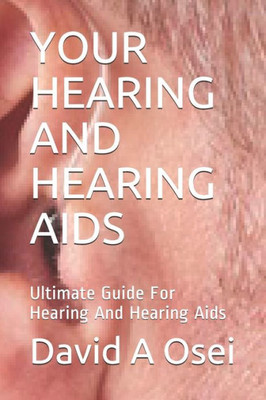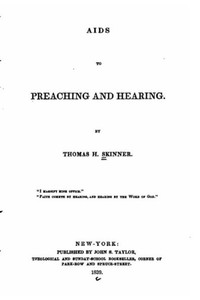
Your Hearing And Hearing Aids : Ultimate Guide For Hearing And Hearing Aids
Independently published
ISBN13:
9781673795028
$9.32
It is estimated that more than 28 million people in the US have a significant loss of hearing. For the majority of these people, a hearing aid will probably be the best way to improve their hearing. Recent advancements in hearing aid technology mean that modern hearing aids have a high level of sound quality in a very small device. It should be noted that a hearing aid will not restore normal hearing. What it can do is make it easier for the user to detect and interpret sounds. Often someone who is hard of hearing will not notice if someone is trying to speak to them. This is what a hearing aid will help with.Although there are several distinct types of hearing aids on the market today, they all work in a similar fashion. A microphone or receiver picks up sound waves and converts them to an electric signal. This signal is then processed and sent to a speaker, which converts it back to an audio signal. The processing serves to amplify those frequencies of which the user has trouble hearing. Hearing aids are able to allow their user to hear human speech at a comfortable volume. This may require some time to adjust to the new signals the brain receives.Hearing aids are not a perfect solution - they do have their limitations. They will not restore normal hearing, nor will they eliminate background noise. However, they may be adjusted to lessen background noise. New users to hearing aids often complain that their voices sound funny to themselves, and that they are bothered by the relative loud noise from things like refrigerator fans and traffic on the street outside. However, as they have a chance to adapt to their new hearing aid, their brain begins to filter out background noises to a more comfortable level.There are different types of hearing loss. The two main types are conductive hearing loss and sensorineural hearing loss. Conductive hearing loss occurs when sound waves cannot reach the inner ear. This can be caused by such things as a buildup of earwax, infection, fluid in the ear, or a punctured eardrum. Sensorineural hearing loss occurs when there is damage to the auditory nerve or hair cells in the inner ear. This damage can be the result of loud noise, injury, infection, a genetic condition or aging. While conductive hearing loss can often be corrected by surgery, sensorineural hearing loss can not.
- | Author: David a Osei
- | Publisher: Independently Published
- | Publication Date: Dec 10, 2019
- | Number of Pages: 108 pages
- | Language: English
- | Binding: Paperback
- | ISBN-10: 1673795021
- | ISBN-13: 9781673795028
- Author:
- David a Osei
- Publisher:
- Independently Published
- Publication Date:
- Dec 10, 2019
- Number of pages:
- 108 pages
- Language:
- English
- Binding:
- Paperback
- ISBN-10:
- 1673795021
- ISBN-13:
- 9781673795028





